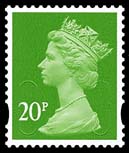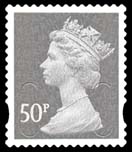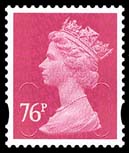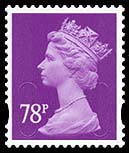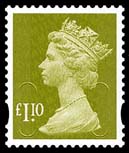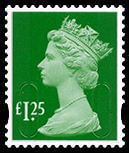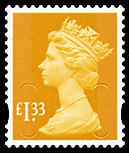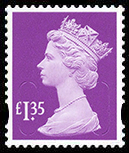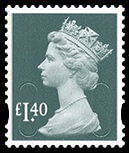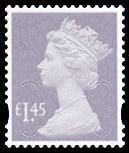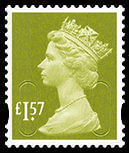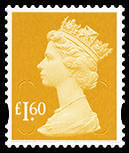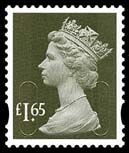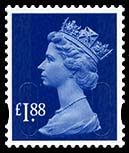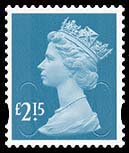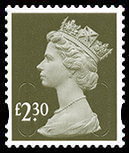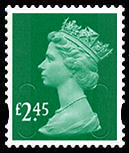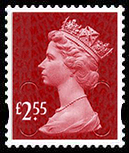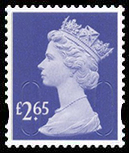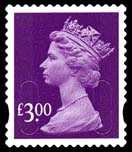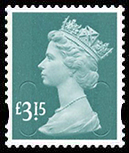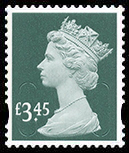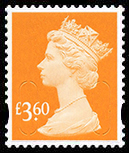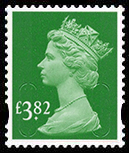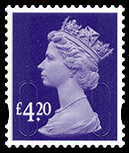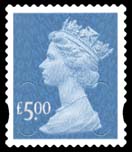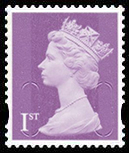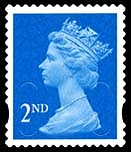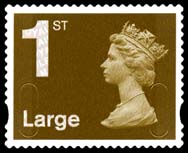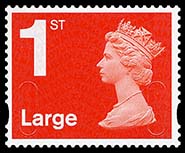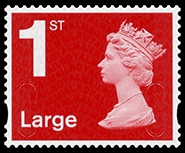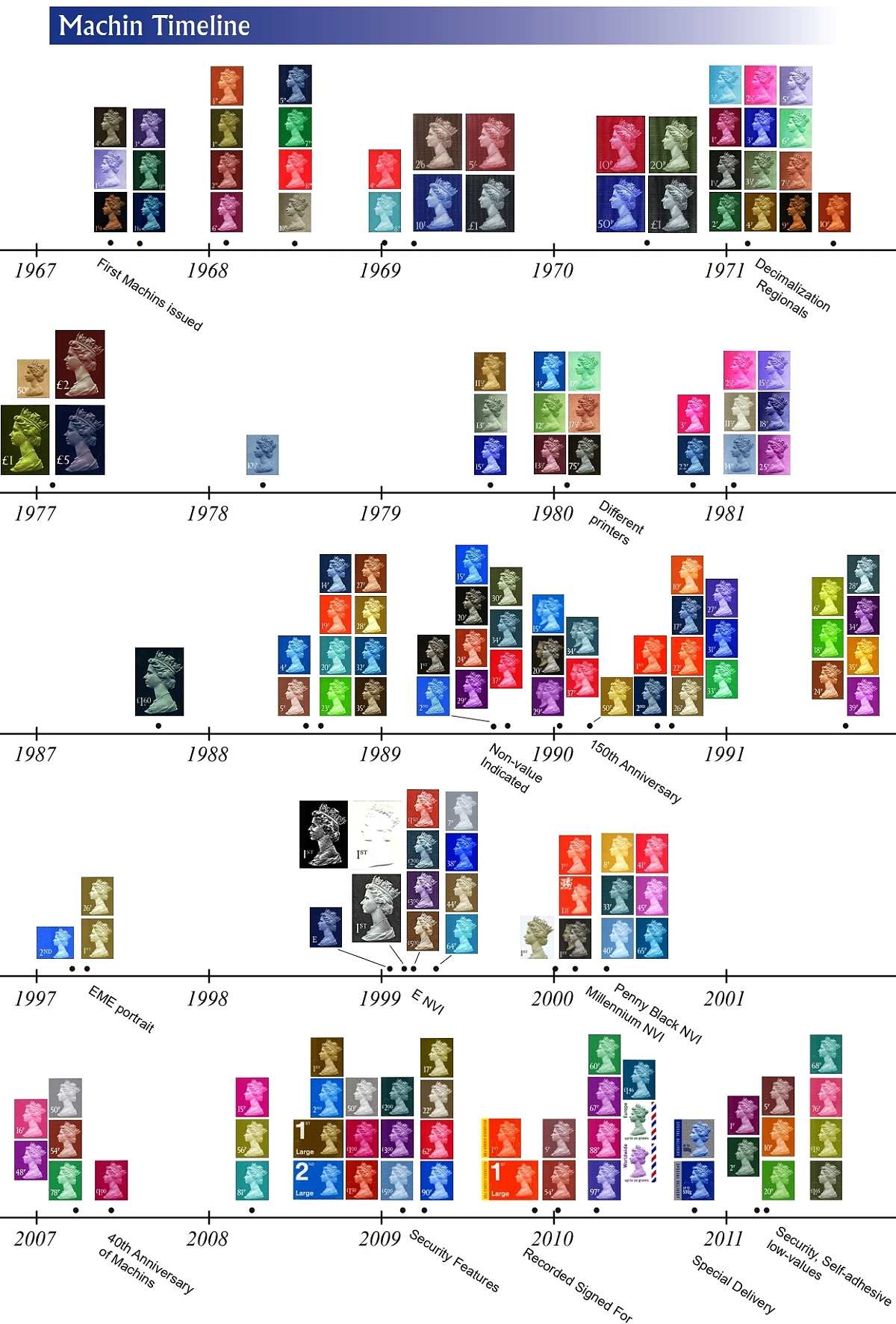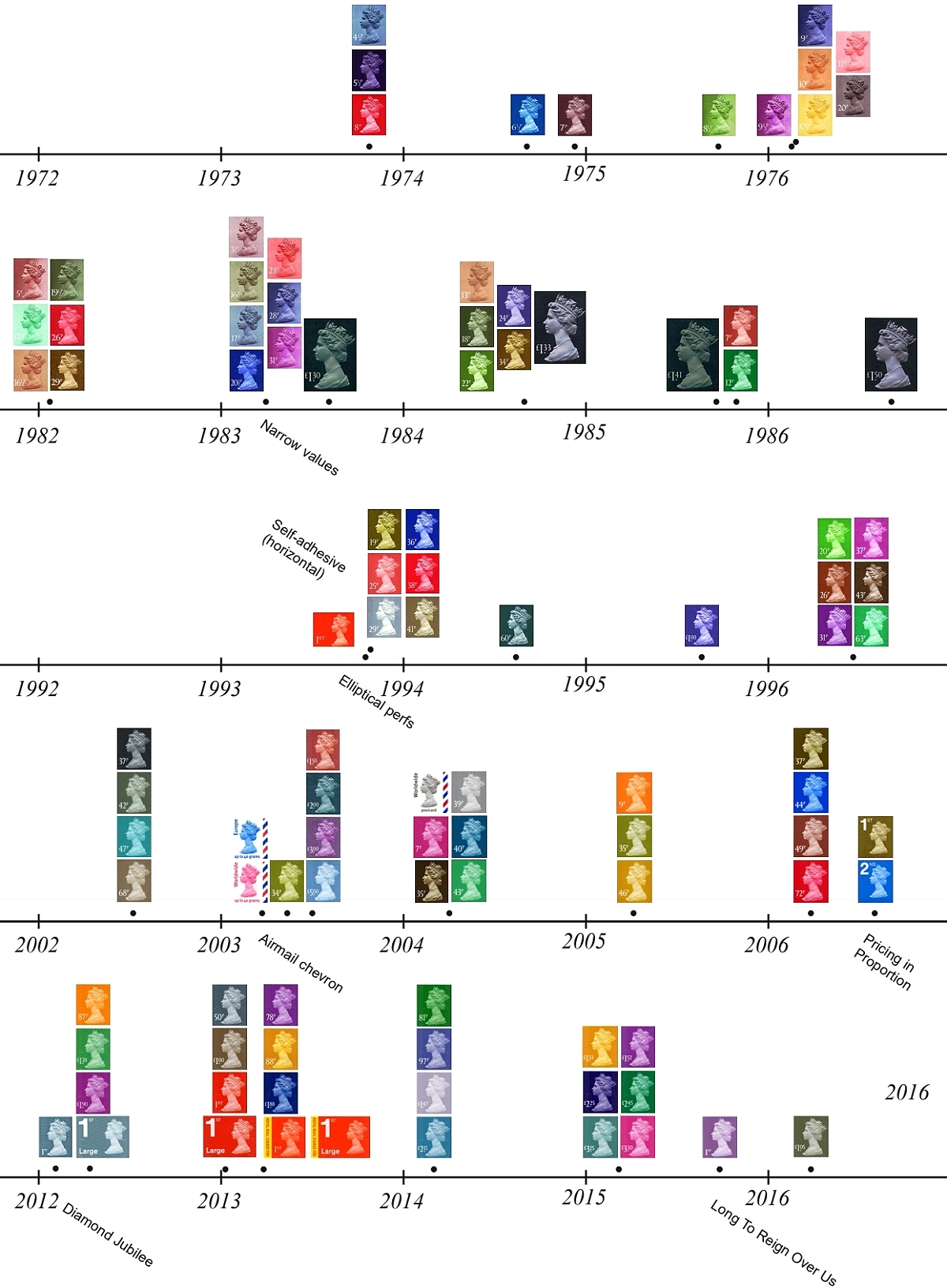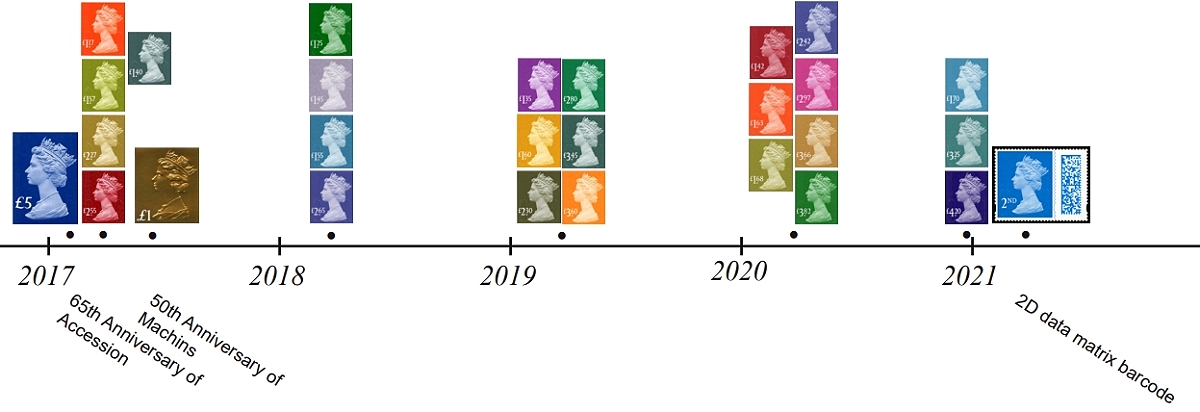


The Machin Stamp Series Color Guide Release Order By Date

No one knew on that day in late 1965 when sculptor Arnold Machin was awarded the contract to design new definitive stamps featuring the portrait of Queen Elizabeth II that the resulting image would be reproduced more than 200 billion times and that 50 years later the stamps would remain popular with mailers, collectors, and the queen herself. Machin was concerned that the photograph retained the depth of the sculpture and had the right shadows. Attempts to photograph the cast were made with state-of-the-art cameras on railway tracks and multiple bright lights that could be switched on and off at will. After many such trials were rejected, the final photograph was taken outside on a foggy autumn morning by a photographer with a black sheet over his head using a wooden Victorian camera.
The Queen approved the designs in 1966 and in 1967 the first stamps were issued to the public. The design has enjoyed a lengthy life (for a stamp). It has now been in use for 50 years and is still going strong – an iconic symbol of Britain. Machin stamps are one of the longest running series of stamps in the world and as a result one of the most studied by philatelists. "The Machin definitive bears the profile of Her Majesty the Queen created by the sculptor Arnold Machin. More than 200 billion stamps have been printed since it was first issued in 1967 making this portrait arguably the most reproduced image of all time." - Royal Mail
Arnold Machin’s design is without question the modern day equivalent of the Penny Black. It too has become an icon. Both designs originated in work for coins and medals and employed the highest craftsmanship of the day, as if they were made to remain untouched by design trends and fashion. The Machin, like the Penny Black, is timeless. The Machin series of postage stamps is the main definitive stamp series in the United Kingdom, used since 5 June 1967.
It is the second series to figure the image of Elizabeth II, replacing the Wilding series. Designed by Arnold Machin, they consist simply of the sculpted profile of the Queen and a denomination. After five decades of service, the series has encompassed almost all changes and innovations in British stamp printing. Concerning the original colours, Machin encouraged the use of a clearer effigy on a single- coloured background. The 4 pence was given a very dark brown, inspired by the Penny Black and requested by the Queen herself. From the philatelic point of view, the Machins are far more complex than the simple design might at first suggest, with well over five thousand varieties of colour, value, ink, gum, phosphor banding, iridescent overprints, perforations, and printing methods.
1990 brought forth the first commemorative adaptation of the Machin design, with the classic William Wyon profile of Queen Victoria, Queen Elizabeth II's Great-Great Grandmother, appearing behind and to the left of Elizabeth, marking 150 years of British stamps. These are sometimes called Double Head Machins. 1993 saw the introduction of both self-adhesive stamps and elliptical perforations on the lower vertical sides of the Machins as a security measure. On the high value stamps, Iriodin ink was used to give them a shiny appearance and ensure the difficulty of their reproduction by photocopying. The most striking aspect of the Machins is the rainbow of colours, since the designs are all identical. During the 1970s a third image and background colour format emerged in addition to the existing light image-dark background and the light image-graded background; the new variation consisted of the image the same colour as the background, with just the shaded detail of the Queen.
On three occasions, postal sources have confirmed that a replacement for the Machin series was proposed by the Post Office, and its successor, the Royal Mail. However, the Queen herself has subsequently rejected all the proposed designs. The Post Office's Ron Dearing obtained agreement from the Queen, that she expressed through a letter by her deputy private secretary that "Her Majesty is very content with the Machin image and thinks that a work of real quality is required if this is to be replaced." In June 1985, a new working group proposed a change to the original Machin stamp design. Arnold Machin refused any changes by anyone except himself and didn't appreciate being approached after the proposed changes were finalized.
Another attempt to alter the design was proposed on the occasion of the 150th anniversary of the Penny Black in 1990. The Queen's decision not to agree to any changes swiftly ended all proposals. On 5 June 2017, the much collected Machin series celebrated its 50th year, or Golden Anniversary. In 1992, the British colony of Hong Kong, made a definitive series featuring Queen Elizabeth II and was an adapted version of the British Machin stamp.
In 1969, the pictorial high values showing castles were replaced by larger, engraved stamps with the Machin design. Since individual values could no longer be easily identified by design alone, each value currently on sale had to have a colour that was distinguishable from all the others. As a result, a wide range of colours have appeared. British currency was decimalized in 1971. The letter "p" was used to indicate decimal pence rather than the "d" used for the previous Sterling pence issues. Newly designed narrower numerals began to appear in 1983. These were required because the larger values (eg. 20½) took up too much room on the stamp.
Many values have been withdrawn and then re-issued in a different colour years after, as postal rates dictated their need. The 20p holds the record with four different colours. In 1989, non-denominated Machins appeared. These simply carried "1st" or "2nd" indicators, denoting the class of service that was paid for. A special variation of the Machin design appeared in 1990 to celebrate the 150th anniversary of the first British stamps. These consisted of a design including Queen Victoria (from the Penny Black stamp of 1840) and the familiar Machin-designed Queen Elizabeth II. In 1993, syncopated perforations appeared. Two large, elliptical perforations, one on each side, were added to the Machins. These were to deter counterfeiting and have become standard on all British definitives.
In 1997, the Machin portrait was modified to take advantage of computerization of the printing process. The new version is much sharper with well- defined details. In comparison, the original version appears blurred. A completely new set of Machins was issued during 1997 with the redrawn portrait. In January 1999, a new non-denominated stamp was issued to pay the letter rate to the rest of Europe. The service indicator is simply "E". New engraved Machin high values were issued in March 1999 to replace the castle designs that had been in use since 1988.
Arnold Machin stated, “The longevity of the Machins, Sir Arnold once speculated, was due to the fact that the profile portrait was derived not from a photograph of the Queen but from a photograph of a delicately lit sculpture, whose subtle highlights and shadows produce a timeless cameo effect. "Achieving that subtlety was not easy." as Sir Arnold recalled, when studio lighting failed to produce the desired effect, the sculpture was taken outside on a foggy day and photographed in a parking lot. Though the design is simple, the Machin definitives are a complicated, fascinating series for stamp collectors. The Machins have undergone numerous changes through the years, and offer many challenges for the collector who is not faint of heart. The complete list of all variations is vast and outside the scope of this webpage. Some of these variations include: Denomination - Color - Size - Perforation - Printing Method - Phosphor Tagging - Value Font - Head Type - and Paper.








Sterling Currency Issues & Colors 1967-1969
Scott# MH1-MH21
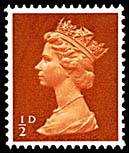
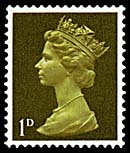


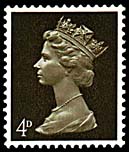
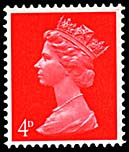
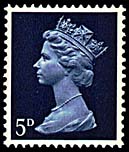

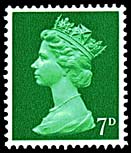
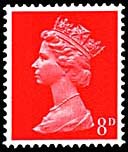


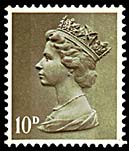


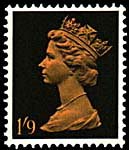
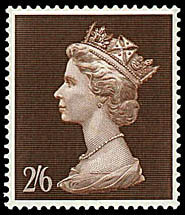




Decimal Currency Issues & Colors 1970-1995 2017
Scott# MH22-MH189 MH461 MH469
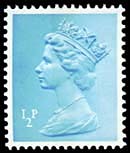


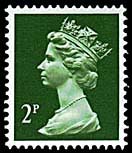
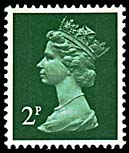
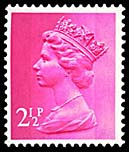
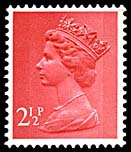

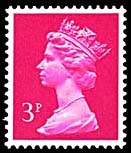
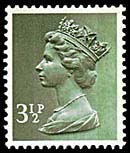






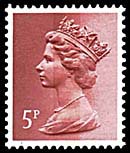



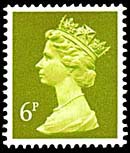
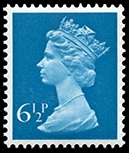
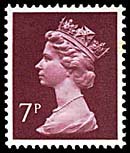

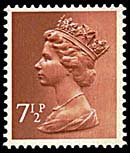
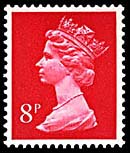


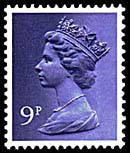
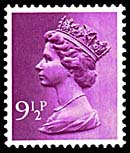
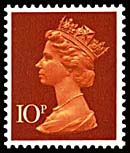
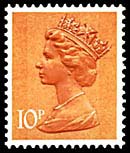
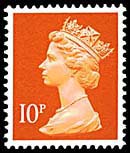


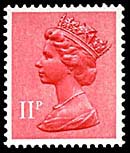
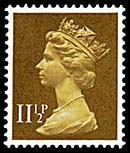

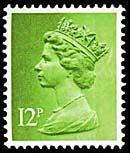
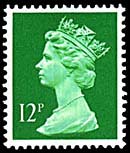





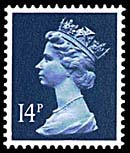


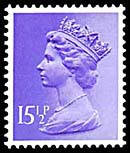

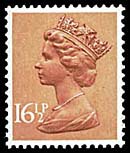
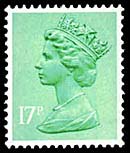

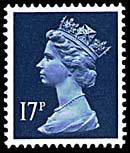

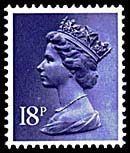

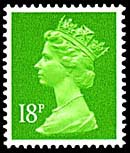
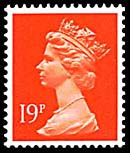


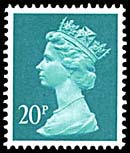



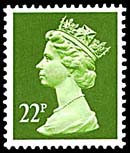

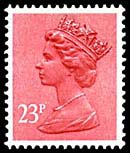
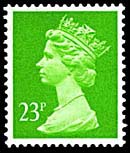






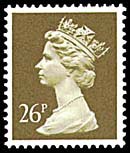




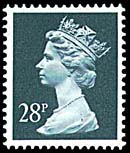


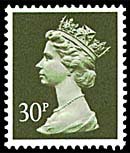
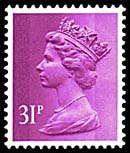
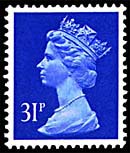
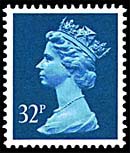
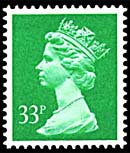
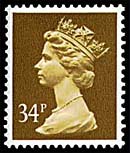


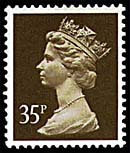
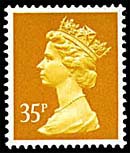

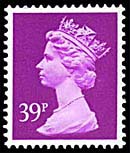
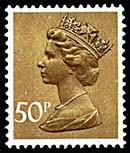
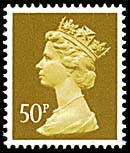

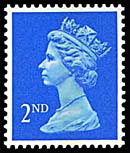











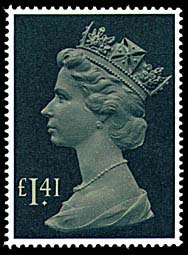



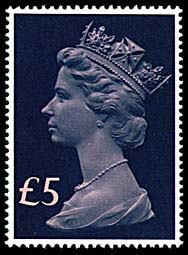
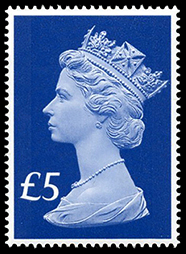

Victoria & Elizabeth II Issues & Colors 1990-2000 2009
Syncopated Scott# MH190-MH198A MH393-394
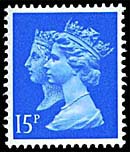







Decimal Currency Issues & Colors 1993-1997
Syncopated Scott# MH199-MH243














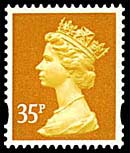
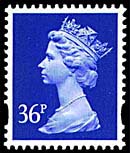



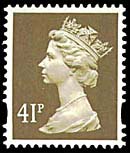
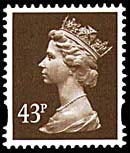
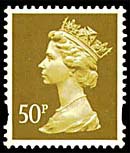



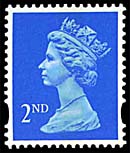
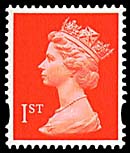
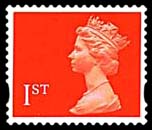

Redrawn Decimal Currency Issues & Colors 1996-2010
Syncopated Scott# MH245-MH336



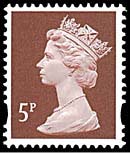



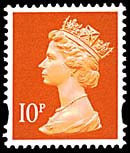









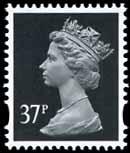


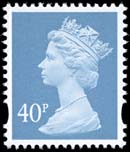

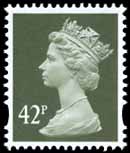
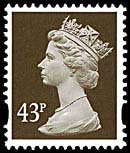
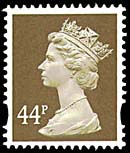


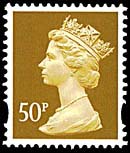








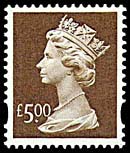






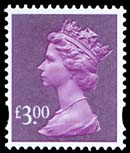
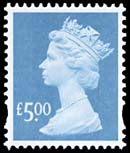



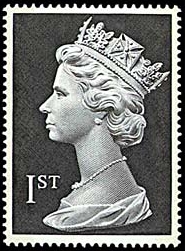



Redrawn Decimal Currency Issues & Colors 2004-2010
Syncopated Scott# MH344-MH382 MH397/MH413
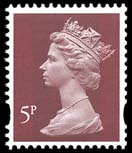
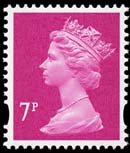







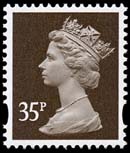
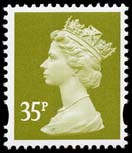

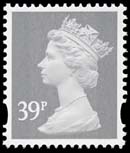



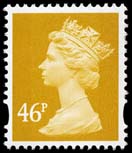
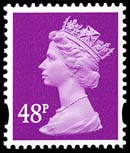

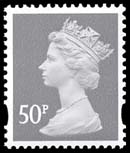

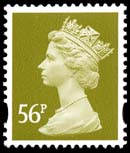
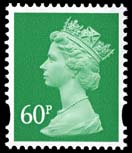


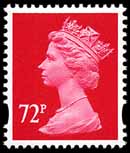
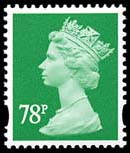

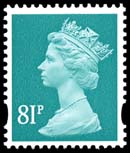

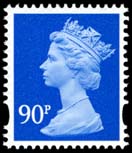

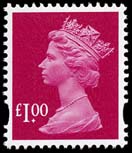

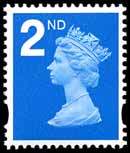

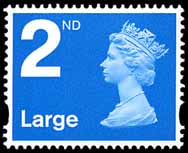
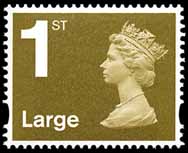

Security Decimal Currency Issues & Colors 2009-2022
Syncopated - Pattern Background Lettering - Slits Scott# MH383-Current




